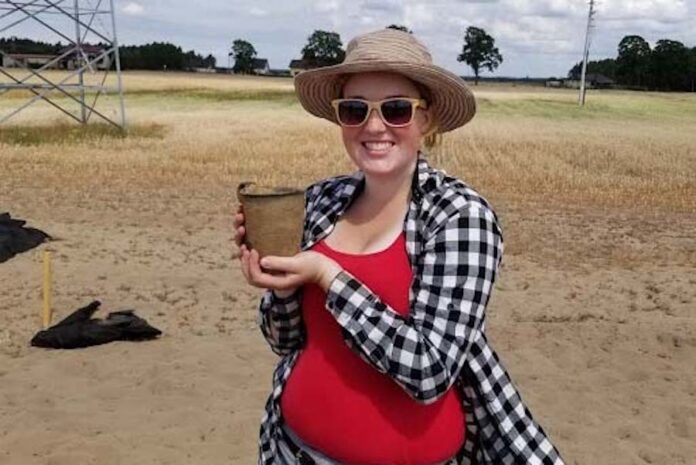Part seven of a continuing series about experiences on an archeological dig in Poland
After looking at the wide selection of archeology field schools to attend last summer, I ended up picking one in Poland, run by the Slavia Foundation. There were many reasons why I chose that field school, one of which is that we were excavating a cemetery and I was interested in looking at human skeletons. If I had done a field school in the U.S., I would have been unable to excavate any human remains that were that old.
People lived across the Americas 15,000 years ago. Drawsko 1, the site in Poland, had both Bronze Age (IV and V Period) cremations and Early Modern (16th -18th century) coffin burials. So if it’s not age that was making it hard for archeologists to excavate sites in the Americas, what was it? Turns out, archeology has a racist past and protections were put into place for Native American remains.
“In this profession [archeology] you have to be respectful, you can’t mess around,” said Lucia Valerio, a student at the field school in Poland. “It’s not funny because we’re working with human bones.”
Historically, anthropologists and archeologists believed that Europeans were “more evolved” than Africans. While this theory is blatantly untrue and does not follow the basic principles of evolution, it persisted for some time. And, unfortunately, scholars used the same racist theory on Native Americans.
Abuses of Native Americans and their remains were common well into the 1900’s. Researchers dug up graves without permission and did studies to try and prove their evolutionary theories. Other abuses, like keeping humans ‘on display’ for the public and performing autopsies without the family members’ permission also occurred.
“Relations between European Americans and Native Americans have been abysmal forever,” said Ashley Stewart, the field osteologist in Poland. “And you know, we dug up all their ancestors a long time ago. And so like the collection [for her dissertation] specifically, we’ve had for almost 100 years, or it’s been out of the ground for 80 years or whatever. That’s a long time. And if you believe that you should leave your ancestors in the ground, that’s really terrible for them to be out for that long.”
Several laws were enacted to prevent these abuses. In 1990, the most stringent law was put into place: the Native American Graves Protection and Repatriation Act, or NAGPRA. This act requires institutions to inventory the Native American remains they had and artifacts associated with them, in addition to consulting with the tribes whom the remains belonged to. The most important part of the act is the repatriations part, wherein institutions who had remains were required to give the remains to tribes for a proper burial if the tribes wished.
Some collections were so vast that even an inventory of what the collection held was next to impossible. For example, in the 1980’s, the Smithsonian Institute held somewhere between 15,000-18,000 Native American remains. Since then, about 5,000 of those have been repatriated.
“Any big Native American site, you always have to get permission to dig it…and if you run into any bone, you have to stop immediately unless you have an osteologists there to tell you whether it’s human or not,” Stewart said. “If you run into Native American bone though in the US you have to stop digging completely unless you have explicit permission.”
Working as an archeologist in the United States, Stewart has had to work with the wishes of Native American tribes in the South. Archeology researchers there are not allowed to perform a lot of tests on Native American remains. Even though some of the tests are not considered invasive by archeologists, they could be considered invasive by some Native American groups.
Stewart and Victoria Swenson, the osteology instructor in Poland, both work on a study called bio-distance. This is the idea that related people will have similar patterns on their bones, such as whether or not their molars come in and how far apart certain teeth are set in the mouth. This study is considered to be non-invasive by archeologists and Native American groups.
“I like to look at teeth, specifically bio-distance, looking at kinship patterns within different cemeteries…like one of the things I really like is the tori, the mandibular torus and the palatine torus which are massive bone growths in the mouth,” Swenson said. “It’s just natural, nothing pathological at all.”
While there are more legal obstacles to excavate ancient human remains in North America, it is possible. When archeologists and Native Americans work together, more can be learned about the ancient peoples of North America with proper respect.
“So I understand where they’re coming from, and that it goes completely against all of their beliefs and cultural systems and all of that stuff to have [the remains] out of the ground, especially for as long as we’ve had them,” Stewart said. “On the other hand, there’s always new techniques, new tests to do, there’s always better ways to analyze them. So from a scientific point of view, it is a loss. But if we are careful in documenting what we have, we can still do a lot.”
Written by: Rachel Paul— science@theaggie.org




